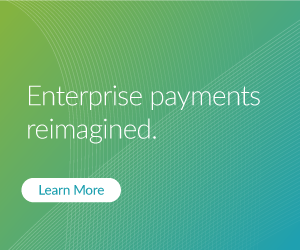Articles
Enterprise Payment Optimization: Driving Strategic Agility and Growth
- By TIS
- Published: 7/20/2021

Cash flow is the lifeblood of every business and helps drive the decision-making processes of most companies. Without the timely receipt of cash, there can be a shortage of liquidity, a slowing growth or even the threat of insolvency.
To accelerate the inflow of cash, companies have placed a great deal of emphasis on improving their cash collections’ processes. Inbound customer payments may be handled on a local, regional or even global level depending on a variety of factors including type of industry, geography, or a company’s operational setup.
There is a long list of payment providers and payment types that support inbound cash, and we also find a myriad of value-added services and enhancements in this space. The number of ways a customer can pay is growing steadily and becoming more innovative, especially for consumers and small businesses. To effectively control liquidity, however, finance teams need visibility and the tools to manage the entire cash cycle. The next logical step for a business is to optimize their outbound payments process through Enterprise Payment Optimization (EPO). By optimizing payments across the entire firm, companies can go well beyond managing liquidity.
EPO breaks down silos within the organization, facilitates collaboration and provides finance leadership teams with complete data that can be used for analysis and business intelligence. It brings payments to the next level and reimagines the process to unlock significant positive impact on performance. EPO is the orchestration layer supporting successful collaboration across an entire organization.
To understand the EPO layer, visualize a highly successful sports team: the whole is greater than the sum of its parts. When the athletes are well trained, in top form and supporting each other, the results are exciting. However, even the best athletes need a decent playing field and a good coach. Each team member has a position to play and a job to do, and by working together, they are much stronger and more successful than any one person could possibly be on their own.
Just imagine what it would be like if a player decided to optimize their own performance with little regard for the team. This could easily destroy the rhythm and harmony of the game. In other words, one player might shine, but the team would probably lose. Instead of supporting each other to win, the game would be fragmented and frustrating.
With today’s speed of change in commerce and technology, it is no longer an option to leave each function, system or geography siloed. Silos reduce visibility, communication and, therefore, growth. A company’s liquidity, profitability, and exposure to risk — including cybercrime and fraud — are negatively impacted without a holistic view across borders, business units and individual departments. And yet, all these areas may be part of a fragmented process, creating or facilitating payments in different countries throughout the world.
EPO serves as the foundation. It breaks down traditional silos and allows new possibilities for collaboration between finance departments and beyond. With EPO, access to data for people and systems — regardless of their location or business line — becomes possible. Finance can be a true business enabler, supporting the strategy of the company.
A fast and efficient post-merger integration of a new subsidiary or partnering with IT to support a successful S/4 Hana (SAP) project are examples of this. Once the treasurer, or head of AP or AR, has visibility and control, they can enrich data and processes and work more seamlessly with other areas in the finance team and across the entire organization. The CFO will also be able to improve performance and directly impact the company’s bottom line, making them a much more valuable partner to the CEO and the board.
Rather than optimizing a department or local entity, it is possible to achieve truly global results with EPO. The EPO layer must support full connectivity to a company’s ERPs, TMS and HR systems and their chosen banks.
EPO allows outsourcing of complexity to gain the power of both flexibility and choice. The EPO platform should also facilitate community intelligence between peers, taking advantage of their experience and knowledge to reduce risk, such as supplier fraud.
Organizations are increasingly adopting a best-of-breed mindset. Clients are moving away from one-size-fits-all systems and toward micro services that are more flexible and tailored to meet their needs. An EPO platform must provide connectivity to best-of-breed vendors via API so companies can enjoy the products and services they require.
Our vision for the future includes a collaboration between on-premises vendors, such as ERPs and specialist providers, within smart-platform ecosystems. This will apply to a variety of business areas including outbound payments, which will allow companies to significantly increase agility and growth once they have optimized and reimagined their enterprise payments.
To learn more about Enterprise Payment Optimization and how TIS has helped finance teams around the world reimagine payments and unlock value, visit us at: tis.biz.
About TIS
TIS is reimagining the world of enterprise payments through a cloud-based platform uniquely designed to help global organizations optimize outbound payments. Corporations, banks and business vendors leverage TIS to transform how they connect global accounts, collaborate on payment processes, execute outbound payments, analyze cash flow and compliance data, and improve critical outbound payment functions. The TIS corporate payments technology platform helps businesses improve operational efficiency, lower risk, manage liquidity, gain a strategic advantage — and ultimately achieve enterprise payment optimization. To learn more, visit: tis.biz.

Copyright © 2024 Association for Financial Professionals, Inc.
All rights reserved.

